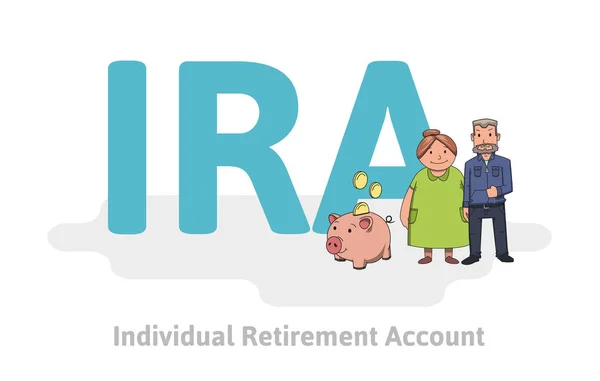Highlights
- Switching your solo 401k can reduce fees and provide better investment options.
- A solo 401k rollover allows you to transfer funds tax-free if done correctly.
- Research providers thoroughly, considering fees, investment options, and customer service.
- Following direct rollover rules avoids taxes and potential penalties.
- Rolling over to an IRA offers greater investment flexibility and lower fees.
Managing your retirement savings is one of the most important aspects of financial planning, especially if you’re self-employed or a small business owner. For many, a solo 401k offers a great way to save for the future while enjoying significant tax benefits and investment flexibility. But what happens if your current solo 401k provider no longer meets your needs?
So, the question arises: can I move my solo 401k to another company? The good news is, yes, you can.
In this blog, we’ll explore why you might want to move your solo 401k, how the process works, and key considerations to remember.
Why Would You Want to Move Your Solo 401k?
Several factors might prompt you to consider switching providers for your solo 401k. Here are some of the most common reasons people make the change:
- Lower Fees: Some companies charge higher fees to manage your 401k, cutting into your savings. Finding a provider with lower fees can help grow your retirement nest egg.
- Better Investment Options: Your current provider might limit your investment choices. If you want more control over where your money goes, switching to a provider with more options could benefit you.
- Improved Customer Service: Poor customer service can sometimes frustrate managing your solo 401k. Moving to a provider with better service could give you peace of mind.
Can I Move My Solo 401k to Another Company?
Yes, you can move your solo 401k from one brokerage firm to another tax-free firm. This process is known as a solo 401k rollover.
When you move your account to another company, you transfer your retirement funds without paying taxes or penalties, as long as you follow the correct procedures. Understanding solo 401k rollover rules is key to ensuring the transfer happens smoothly and without unnecessary costs.
How Do You Move Your Solo 401k?

- Research New Providers: Before moving your solo 401k, you need to find a new provider that fits your needs. Look at fees, investment options, and customer reviews to ensure you make the best choice.
- Contact Your Current Provider: Reach out to your current solo 401k provider and let them know you want to transfer your account. They’ll provide the necessary paperwork and instructions for the rollover process.
- Open a New Solo 401k Account: Once you’ve chosen a new provider, open a new solo 401k account. This is where your funds will be transferred. Make sure everything is set up and ready to go before moving your money.
- Initiate the Transfer: Follow the instructions from your current and new providers to transfer your solo 401k funds. Most transfers are done through a direct rollover, where your old provider sends the funds directly to the new one. This avoids any tax complications.
- Confirm the Transfer: Once complete, confirm with your old and new providers that everything was done correctly. You’ll want to ensure your funds are in the new account and ready for investment.
Can I Move My Solo 401k to Another Company in Mid-Career?
It’s not uncommon for people to rethink their retirement savings plans mid-career. Whether you’re a small business owner or self-employed, you might realize that your current 401k provider isn’t serving your needs as thought.
The good news is, if you’re wondering, “can I move my solo 401k to another company?” the answer is still a resounding yes. Making the move mid-career is not just possible. It can benefit your long-term savings strategy, offering more flexible investments, reduced fees, and better service.
However, follow proper individual 401k rollover rules to avoid taxes or penalties.
What Happens if You Don’t Do a Direct Rollover?
If your old provider sends you a check instead of directly transferring the funds, this is an indirect rollover. You’ll have 60 days to deposit the money into your new solo 401k account.
If you miss this deadline, the amount will be considered taxable income, and you might face a penalty if you’re under 59 ½ years old. It’s important to follow the individual 401k rollover rules to avoid potential penalties or unnecessary taxes.
If you want to diversify your investment portfolio with precious metals, we can help you. With over 15 years of experience trading the global markets, we offer a sophisticated approach to investing in gold, silver, platinum, palladium, and rare minted coins. Whether you want to open a precious metals IRA account or invest in rare coins, we’re here to help you grow your wealth.
Are There Any Fees or Penalties for Moving Your Solo 401k?

In most cases, there are no fees or penalties for moving your solo 401k if you follow the direct rollover process. However, it’s important to double-check with both your old and new providers for any potential administrative fees. Make sure everything is clear before initiating the transfer.
Solo 401k Rollover to IRA: Another Option
In addition to moving your solo 401k to another provider, consider a solo 401k rollover to IRA. This option gives you even more flexibility with investments and may come with lower fees.
An IRA can be especially useful if you prefer to consolidate all your retirement accounts into one. However, compare both options’ advantages and potential drawbacks before deciding.
Summary
The question “can I move my solo 401k to another company?” is one that many self-employed people consider when managing their retirement plans. The process is simple, and with proper planning, you can transfer your account to a new provider with minimal hassle. Just follow the necessary steps to avoid penalties, and you’ll be well on your way to better managing your retirement future.
Disclaimer
The content provided on this blog is for informational and educational purposes only and does not constitute financial or investment advice. While we strive to provide accurate and up-to-date information, you should not rely on this content as a substitute for professional financial advice. Any financial decisions you make are done so at your own risk, and we encourage you to consult with a licensed financial advisor before making any investment decisions.
The views and opinions expressed in this blog are solely those of the authors and do not necessarily reflect the views of any affiliated entities. The information presented here is not intended as a solicitation or recommendation to buy, sell, or hold any financial product.


